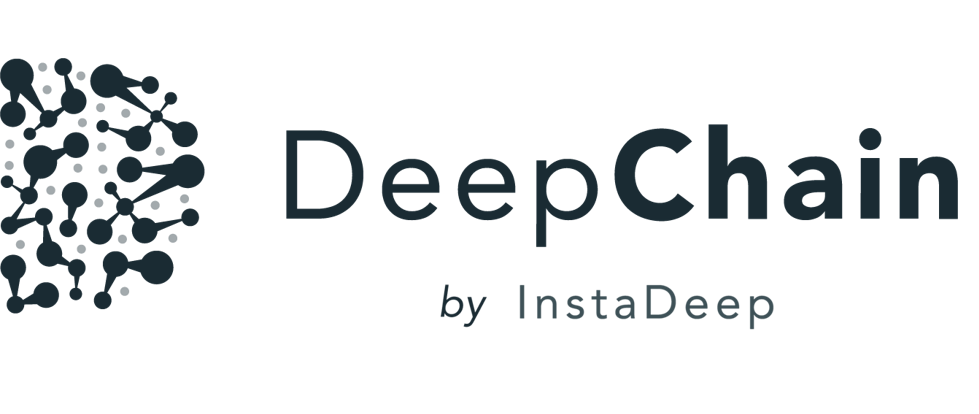Table of contents
bio-transformers is a python wrapper on top of the ESM/Protbert model, which are Transformers protein language model, trained on millions on proteins and used to predict embeddings. This package provide other functionalities (like compute the loglikelihood of a protein) or compute embeddings on multiple-gpu.
You can find the original repo here :
It is recommended to work with conda environnements in order to manage the specific dependencies of the package.
conda create --name bio-transformers python=3.7 -y
conda activate bio-transformers
pip install bio-transformersThe main class BioTranformers allow the developper to use Protbert and ESM backend
from biotransformers import BioTransformers
BioTransformers.list_backend()
Use backend in this list :
* esm1_t34_670M_UR100
* esm1_t6_43M_UR50S
* esm1b_t33_650M_UR50S
* esm_msa1_t12_100M_UR50S
* protbert
* protbert_bfdChoose a backend and pass a list of sequences of Amino acids to compute the embeddings.
By default, the compute_embeddings function return the <CLS> token embedding.
You can add a pool_mode in addition , so you can compute the mean of the tokens embeddings.
from biotransformers import BioTransformers
sequences = [
"MKTVRQERLKSIVRILERSKEPVSGAQLAEELSVSRQVIVQDIAYLRSLGYNIVATPRGYVLAGG",
"KALTARQQEVFDLIRDHISQTGMPPTRAEIAQRLGFRSPNAAEEHLKALARKGVIEIVSGASRGIRLLQEE",
]
bio_trans = BioTransformers(backend="protbert")
embeddings = bio_trans.compute_embeddings(sequences, pool_mode=('cls','mean'))
cls_emb = embeddings['cls']
mean_emb = embeddings['mean']If you have access to multiple GPU, you can activate the multi_gpu option to speed-up the inference.
This option relies on torch.nn.DataParallel.
bio_trans = BioTransformers(backend="protbert",multi_gpu=True)
embeddings = bio_trans.compute_embeddings(sequences, pool_mode=('cls','mean'))The protein loglikelihood is a metric which estimates the joint probability of observing a given sequence of amino-acids. The idea behind such an estimator is to approximate the probability that a mutated protein will be “natural”, and can effectively be produced by a cell.
These metrics rely on transformers language models . These models are trained to predict a “masked” amino-acid in a sequence. As a consequence, they can provide us an estimate of the probability of observing an amino-acid given the “context” (the surrounding amino-acids). By multiplying individual probabilities computed for a given amino-acid given its context, we obtain a pseudo-likelihood, which can be a candidate estimator to approximate a sequence stability.
from biotransformers import BioTransformers
sequences = [
"MKTVRQERLKSIVRILERSKEPVSGAQLAEELSVSRQVIVQDIAYLRSLGYNIVATPRGYVLAGG",
"KALTARQQEVFDLIRDHISQTGMPPTRAEIAQRLGFRSPNAAEEHLKALARKGVIEIVSGASRGIRLLQEE",
]
bio_trans = BioTransformers(backend="protbert",device="cuda:0")
loglikelihood = bio_trans.compute_loglikelihood(sequences)- support MSA transformers
- add compute_accuracy functionnality
- support finetuning of model with multiple-gpus
Here some papers on interest on the subject.
The excellent ProtBert work can be found at (biorxiv preprint):
@article{protTrans2021,
author={Ahmed Elnaggar and Michael Heinzinger, Christian Dallago1,Ghalia Rihawi, Yu Wang, Llion Jones, Tom Gibbs, Tamas Feher, Christoph Angerer,Debsindhu Bhowmik and Burkhard Rost},
title={ProtTrans: Towards Cracking the Language of Life’s Code Through Self-Supervised Deep Learning and High Performance Computing},
year={2019},
doi={10.1101/2020.07.12.199554},
url={https://www.biorxiv.org/content/10.1101/2020.07.12.199554v3.full.pdf},
journal={bioRxiv}
}For the ESM model, see (biorxiv preprint):
@article{rives2019biological,
author={Rives, Alexander and Meier, Joshua and Sercu, Tom and Goyal, Siddharth and Lin, Zeming and Liu, Jason and Guo, Demi and Ott, Myle and Zitnick, C. Lawrence and Ma, Jerry and Fergus, Rob},
title={Biological Structure and Function Emerge from Scaling Unsupervised Learning to 250 Million Protein Sequences},
year={2019},
doi={10.1101/622803},
url={https://www.biorxiv.org/content/10.1101/622803v4},
journal={bioRxiv}
}For the self-attention contact prediction, see the following paper (biorxiv preprint):
@article{rao2020transformer,
author = {Rao, Roshan M and Meier, Joshua and Sercu, Tom and Ovchinnikov, Sergey and Rives, Alexander},
title={Transformer protein language models are unsupervised structure learners},
year={2020},
doi={10.1101/2020.12.15.422761},
url={https://www.biorxiv.org/content/10.1101/2020.12.15.422761v1},
journal={bioRxiv}
}For the MSA Transformer, see the following paper (biorxiv preprint):
@article{rao2021msa,
author = {Rao, Roshan and Liu, Jason and Verkuil, Robert and Meier, Joshua and Canny, John F. and Abbeel, Pieter and Sercu, Tom and Rives, Alexander},
title={MSA Transformer},
year={2021},
doi={10.1101/2021.02.12.430858},
url={https://www.biorxiv.org/content/10.1101/2021.02.12.430858v1},
journal={bioRxiv}
}
# License
This source code is licensed under the **Apache 2** license found in the `LICENSE` file in the root directory.




